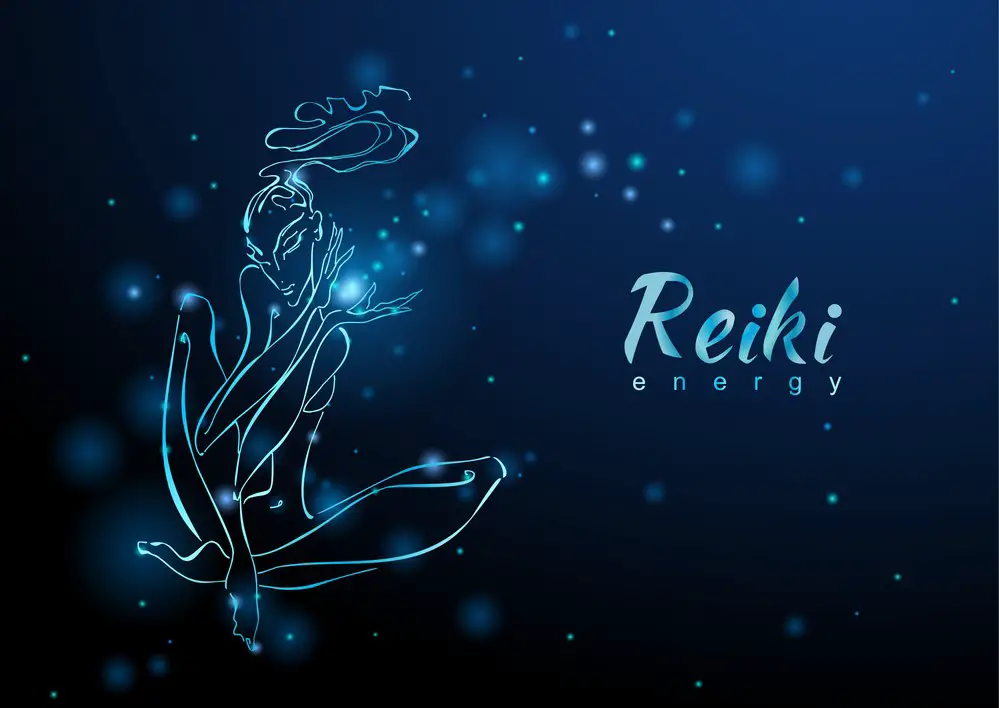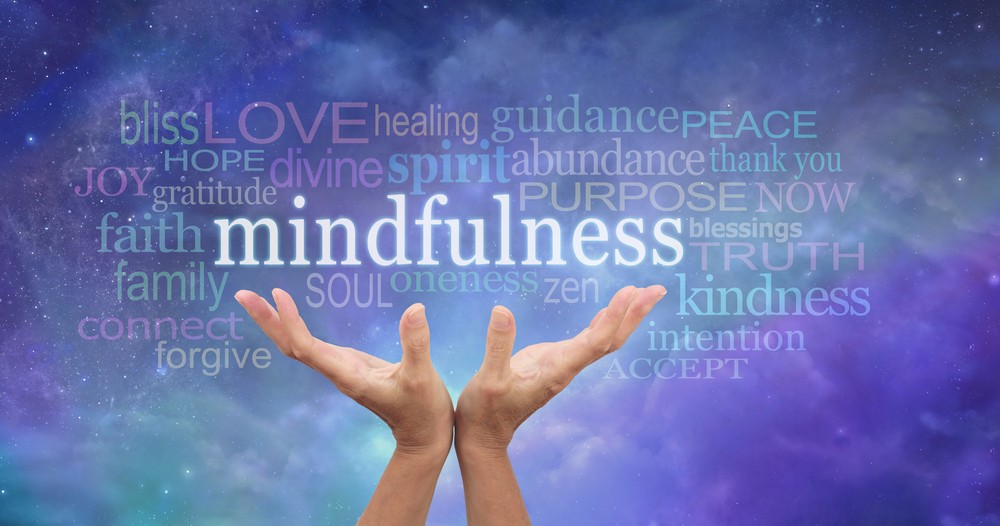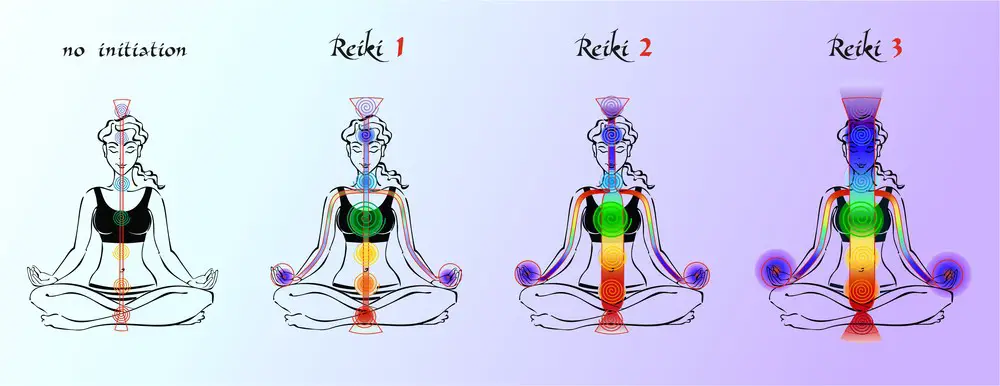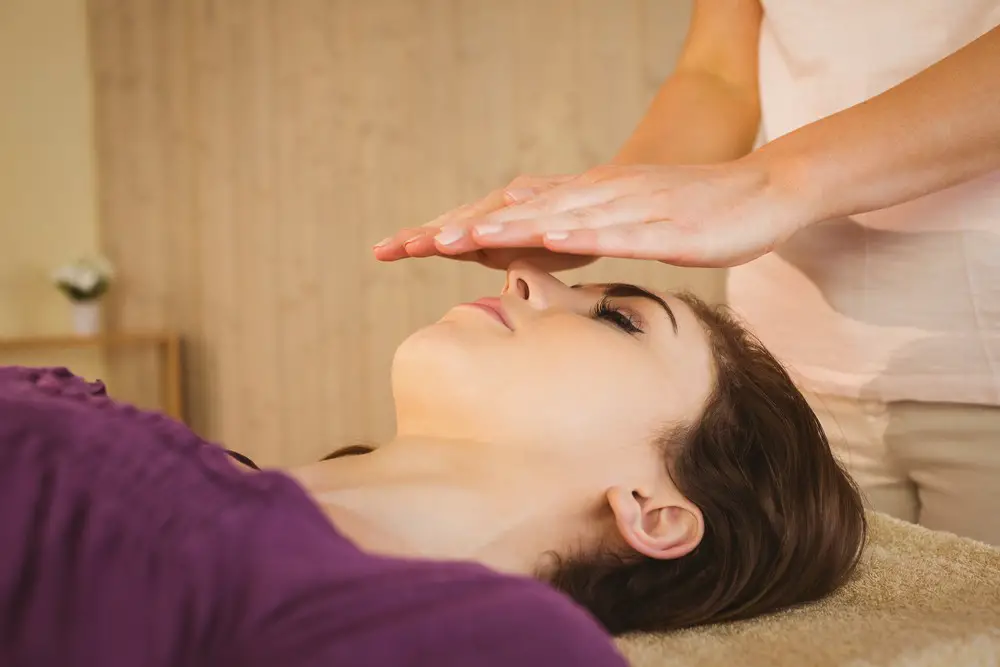As a BetterHelp affiliate, we receive compensation from BetterHelp if you purchase products or services through the links provided
Reiki is an ancient healing technique that channels universal life force energy to promote balance, harmony, and overall well-being. This holistic approach to wellness is rooted in Japanese tradition, developed in the early 20th century by Dr. Mikao Usui. By utilizing the five fundamental Reiki principles as a guiding framework, practitioners and recipients alike can delve into a transformative journey to strengthen the connection between mind, body, and spirit.
Incorporating the Reiki principles into daily life has yielded various benefits, including stress reduction, enhanced self-awareness, and a deeper connection with oneself and the world around us. Through Reiki attunements, training, and consistent practice, individuals may discover an improved quality of life and a greater sense of balance. As interest in complementary and alternative therapies continues to grow, the practice of Reiki has gained widespread attention for its potential to support both physical and emotional well-being.
Key Takeaways
- Reiki is an ancient healing technique founded by Dr. Mikao Usui that focuses on channeling universal life force energy.
- The five fundamental Reiki principles guide practitioners and recipients toward a balanced and harmonious connection between mind, body, and spirit.
- Regular practice, training, and integrating Reiki into daily life can lead to numerous health benefits, such as stress reduction and enhanced self-awareness.
 Reiki Principles Origins
Reiki Principles Origins
Dr. Mikao Usui
Dr. Mikao Usui, the founder of Reiki, embarked on a journey to uncover the mysteries of this powerful healing method. Delving deep into his spiritual pursuits, he meditated and performed rituals on a sacred mountain in Japan. During this period, he received the divine gift of Reiki energy, giving birth to this transformative practice.
Japanese Words
The very essence of Reiki lies in its core principles drawn from Japanese philosophy. Each principle consists of five key Japanese words which encapsulate the foundation of this healing method:
- Gokai – The Five Reiki Principles
- Shiranamae – Do Not Anger
- Shinpaishinaide – Do Not Worry
- Kanshashite – Be Grateful
- Gyōputokiritsu – Work Diligently
These principles gently remind Reiki practitioners to maintain balance and harmony.
Usui System of Natural Healing
The Reiki system, developed by Dr. Usui, encompasses a holistic approach to healing body, mind, and spirit. This approach revolves around believing everyone can harness the universal life energy, or “ki,” to facilitate healing. The Usui Reiki system comprises three levels:
- Shoden (Level 1): The initial stage focuses on hands-on healing and self-treatment.
- Okuden (Level 2): An advanced stage introducing symbols and distant healing.
- Shinpiden (Master/Teacher Level): The practitioner can now teach Reiki to others and attain true mastery.
The practitioner’s dedication and experience are crucial in grasping each level’s vast depths and potential.

History
Reiki’s rich history dates back to the early 20th century when Dr. Mikao Usui shared his newfound wisdom with the world. His valuable teachings reached the Western world as time passed, blossoming and evolving. Reiki has become a renowned healing practice with countless disciples worldwide, united in their quest for spiritual growth and enhanced well-being.
Reiki Overview
Energy Healing
Reiki, an ancient form of energy healing, facilitates the flow of universal energy into the body to promote overall well-being. The practice connects deeply to our natural healing capabilities by channeling our world’s universal energy. As an integral part of energy healing, Reiki energy aims to dissolve energy blocks within the spirit and revitalize the body.
Through this healing modality, practitioners aim to restore balance within the energy field, potentially alleviating physical and emotional ailments. Thus, it is essential to understand the core principles of Reiki to experience and harness its therapeutic benefits fully.
Universal Energy
The term “Reiki” originates from two Japanese words: “Rei,” which means “universal,” and “Ki,” meaning “life force energy.” Together, these words create a concept signifying the omnipresent force that permeates every living being. As a fundamental aspect of Reiki, practitioners access this universal energy to bolster their natural healing abilities.
So, how does one connect with this powerful energy source? The answer lies in the attunement process, wherein a Reiki Master imparts their knowledge and energy to the aspiring practitioner. Each student learns to embrace and apply the universal energy to various healing practices throughout this journey.
Reiki Energy
Reiki energy is unique as it possesses an innate intelligence, guiding itself to where it’s most needed within the body. Contrary to popular belief, the Reiki practitioner does not direct the energy but merely acts as a conduit to channel the healing force. Doing so creates a harmonious environment that allows the body’s energy field to recalibrate and heal.
Some key elements of the Reiki practice include:
- Reiki Principles: These serve as guidelines for daily living, encouraging practitioners to embody gratitude, release worry, work diligently, and respect all living beings.
- Hand Positions: Various hand positions aid in directing the flow of Reiki energy, targeting specific areas of the body to optimize the healing process.
- Symbols: In advanced Reiki practices, symbols act as tools to enhance the energy flow, expand consciousness, and connect with higher levels of healing.
As an all-encompassing healing practice, Reiki strives to maintain the delicate balance between the body, mind, and spirit. One can embark on a transformative journey toward self-discovery and holistic well-being by embracing and exploring its intricacies.

The Five Reiki Principles
Reiki is a powerful healing technique that balances one’s physical, mental, and emotional well-being. To achieve this harmony, adherents of Reiki follow the Five Reiki Principles – guidelines that help cultivate a peaceful, healthy mindset. This section delves into the meaning of each principle to give you insight into its importance.
Meaning of Each Principle
- Just for today, I will not be angry.Anger is a potent emotion that can disrupt one’s sense of peace and well-being. This principle encourages individuals to let go of their anger. In doing so, they can achieve a calm, tranquil state of mind, making it easier to face life’s challenges.
- Just for today, I will not worry.Worry and fear can consume one’s thoughts, making it difficult to focus on the present moment. By acknowledging these emotions and choosing not to worry, individuals can minimize the impact of stress and anxiety on their mental health, thus empowering themselves to tackle any obstacles head-on.
- Just for today, I will be grateful.Gratitude is a powerful tool that can help shift individuals’ focus from what they lack to what they have. This principle encourages practitioners to appreciate the abundance in their lives – material possessions, relationships, or experiences – allowing them to cultivate a sense of contentment and emotional balance.
- Just for today, I will do my work honestly.Honesty is a cornerstone of personal integrity, and this principle encourages individuals to be truthful in all aspects of their lives. By embracing a sincere approach to work and personal interactions, practitioners can live with a clear conscience and foster an environment of trust and respect.
- Just for today, I will be kind to every living thing.Kindness is fundamental to compassion and empathy, positively impacting the giver and receiver. Reiki practitioners promote goodwill and understanding by extending friendliness and warmth to all living beings, further nurturing a sense of unity and interconnectedness.
While this brief exploration can’t capture the full depth of each principle, it demonstrates the essence of Reiki practice – striving for balance, inner peace, and harmony through self-awareness and personal growth. As practitioners strive to live by these principles daily, they can cultivate a profound sense of meaning and purpose.
Life Application

Mindfulness
One major aspect of Reiki principles is the practice of mindfulness. Practitioners believe that awareness of one’s thoughts, feelings, and sensations in the present moment can help individuals foster a sense of trust and release worries about the future and past. Through regular training, Reiki promotes personal growth, offering a balanced, calm, and relaxed life.
To achieve mindfulness, individuals may use mantras or meditate daily. They may also express gratitude for the present moment, which helps maintain emotional balance. Mindfulness allows for the reduction of tension, negative emotions, and mood swings.
Living in the Moment
Living in the moment is not only a key component of the Reiki lifestyle, but it’s also essential for cultivating a balanced life. By focusing on the present moment, individuals can escape feelings of lack and pain associated with dwelling on past errors or future anxieties.
Living in the moment is often linked to believing in a higher power like God. Some Reiki practitioners subscribe to the idea that the universe’s energy, often associated with the law of attraction, can be harnessed to manifest a balanced life. This way, individuals can connect with positive energy and achieve personal growth.
Positive Energy
Reiki principles encourage the cultivation of positive energy, which is essential for relaxation and overall well-being. Practitioners believe that exuding positive emotions and thoughts can attract similar energy from the universe.
Maintaining a positive attitude helps to reduce tensions and negative emotions, promoting a sense of calm and balance. Individuals can use various techniques, such as breathing exercises or visualization, to foster positivity and relaxation. In doing so, they tap into their deeper selves, embracing personal growth and spiritual development.
Reiki Attunement and Training

Reiki is a holistic healing method that brings balance and harmony to the mind, body, and spirit. It’s remarkable how attunements and training at various levels can transform one’s health and well-being. This section explores the Reiki I, Reiki Practitioner, and Reiki Master training stages.
Reiki I
Reiki I, the first step in the journey, focuses primarily on self-healing. Students develop a foundation that fosters an intimate connection to the universal life force energy. During this training, individuals learn vital techniques such as:
- Hand positions: Proper placement of hands on the body to channel Reiki energy.
- Byosen Scanning: A method of detecting energy imbalances, allowing practitioners to discern areas that need attention.
- Gassho meditation: A tranquil practice that assists in cultivating inner peace and self-awareness.
The Reiki I attunement, administered by a Reiki Master, initiates the learner’s connection to the energy, ushering them into a new realm of conscious healing.
Reiki Practitioner
As a Reiki Practitioner, one delves deeper into self-discovery and healing others. The training equips students with techniques that empower them to effectively assist others in their healing journeys. Some of these key skills include:
- Distant Healing: The ability to transmit healing energy beyond physical proximity.
- Mental/Emotional Healing: Techniques for addressing mental and emotional imbalances.
- Symbols: Introduction of sacred symbols that boost the flow of Reiki energy.
A Reiki Practitioner’s attunement further expands their conduit for universal life force energy, amplifying their capacity to heal.
Reiki Master
The pinnacle of Reiki training, a Reiki Master embodies unparalleled dedication to the practice. By embracing a higher level of proficiency and responsibility, Reiki Masters become conduits for profound transformation. They gain new abilities, such as:
- Attuning Others: Imparting Reiki energy to students, empowering them to heal and advance in their Reiki journey.
- Master Symbol: Utilizing the transformational power of the master symbol in healing sessions.
- Teaching Reiki: Mentorship skills for guiding students to develop their Reiki practice.
Receiving the Reiki Master attunement is an empowering experience, signifying a commitment to this ancient healing art’s preservation and continual growth, ultimately spreading light and love worldwide.

Reiki Sessions
Session Process
Reiki sessions are transformative experiences where the practitioner channels healing energy to the recipient’s body, promoting well-being and balance. The session begins with the client lying on a table, fully clothed and comfortable. A serene atmosphere envelops the room, setting the perfect ambiance for healing and relaxation.
During the process, the practitioner strategically places their hands on various areas of the client’s body, targeting specific energy centers. This hands-on approach works harmoniously with the living thing’s innate power, enhancing emotions and reducing pain, stress, and depression. Each session may be uniquely tailored to the individual’s needs, reaffirming that one size does not fit all. It’s like a breath of fresh air, as if one’s energy is dancing gracefully through each body system, promoting tranquility and balance.
Incorporating Crystals
Crystals are like nature’s little helpers, seamlessly integrating into reiki sessions. Their inclusion adds a layer of vibrational resonance, harmonizing the energy flow and elevating the healing experience.
In the world of reiki, there are various types of crystals with many properties. Some favorites include:
- Rose Quartz: Unleashes the power of love, mending emotional wounds and fostering forgiveness.
- Amethyst: Encourages mental clarity and spiritual insight, helping one to glide through stressful situations.
- Black Tourmaline: Clears negative energies and shields against undesirable influences.
- Citrine: Boosts self-confidence and creativity and helps break through negative thought patterns.
The practitioner carefully selects the appropriate crystal companions, strategically placing them around the client’s body or on specific energy points. This mystical collaboration creates a symphony of healing energy, gently guiding the recipient towards perfecting well-being. Each crystal embraces its role, synergizing its powers with the reiki energy, paving the way toward balance and inner harmony.
Health Benefits and Side Effects
Supporting Mental Health
Reiki is known for its potential impact on mental health. The practice helps individuals find balance by promoting mindfulness and reducing negative energy. Through gentle touch and affirmations, individuals may experience an enhanced sense of well-being, easing symptoms of depression, anxiety, and stress. However, it is essential to remember that while Reiki can complement traditional treatments, it is not a standalone solution for mental health disorders.
Physical Pain Relief
Reiki practitioners assert that the technique can alleviate physical pain by releasing blocked energy in the body, particularly around the head and other areas of discomfort. As tension dissipates, so does the physical pain, relieving ailments such as headaches, muscle aches, and even some chronic conditions. Yet, seeking medical advice from a professional is always paramount before relying solely on Reiki for pain relief.
Sleep and Relaxation
One cannot underestimate the importance of quality sleep for overall well-being. A Reiki session’s peaceful environment, complete with soothing music and calming visualizations, encourages deep relaxation. Recipients often report experiencing feelings of tingling and warmth during treatment, which may contribute to improved sleep after a session. However, it’s important to note that results can vary from person to person, and Reiki should not be considered a cure-all solution for sleep disorders.
As a holistic healing method, Reiki provides numerous potential benefits for those seeking to improve their quality of life. While supporting mental health, pain relief, and promoting relaxation, it is not a miracle treatment and should not replace conventional medical care. It is vital to approach Reiki with an open mind and embrace its potential benefits while remaining aware of potential limitations within the practice.
Reiki in Everyday Life
Practicing Kindness
Incorporating Reiki principles into everyday life begins with practicing kindness. By intentionally treating others compassionately, individuals can create a harmonious energy flow that promotes well-being. Furthermore, the more kindness one extends toward others, the more happiness one can experience.
Through simple gestures, such as offering a helping hand or a listening ear, one truly embodies the essence of Reiki, positively affecting the energy around them. Doing so fosters a sense of interconnectedness and mutual respect among individuals.
Gratitude and Positivity
Another key principle in living a Reiki-inspired life is embracing gratitude and positivity. Each day presents opportunities to express thankfulness for the numerous blessings, big and small. Cultivating an attitude of gratitude, it creates space for positive energy to flow, ultimately balancing emotions and guiding one toward inner peace.
Experiencing the world through a positive lens allows individuals to attract favorable circumstances, shaping their reality under their intentions. The practice of affirmations, for example, can aid in maintaining an optimistic outlook, subsequently reinforcing the power of positive thinking.
Reducing Stress and Anxiety
Reiki principles apply to addressing common challenges such as stress and anxiety. Through mindfulness techniques, one can reduce the negative effects of stress, fostering a serene environment that encourages healing and natural vitality.
To counteract stress, individuals may practice deep breathing, meditation or incorporate grounding activities to restore balance and harmony within the body. In adopting these coping mechanisms, one can gradually eliminate the weight of anxiety, allowing the essence of Reiki to permeate their daily life.
In conclusion, incorporating Reiki principles into everyday life is a transformative journey that fosters kindness, gratitude, positivity, and balance. By practicing these techniques, individuals can effectively reduce stress and create an environment conducive to physical and emotional healing, ultimately promoting happiness and well-being.
Conclusion
Reiki principles offer a valuable framework for personal growth and healing. By embracing these principles, individuals can foster a more balanced, harmonious life full of growth and positive energy.
The five Reiki principles serve as guiding lights for practitioners, enabling them to navigate life’s challenges with grace and wisdom. Each principle—anger management, worry reduction, gratitude, diligence, and compassion—is crucial in promoting holistic well-being. When integrated into daily life, these principles unlock the door to a transformative journey of self-discovery.
In today’s fast-paced world, the power of Reiki principles cannot be underestimated. They provide a compass to navigate the turbulent waters of modern life, fostering the ability to stay grounded in adversity. The practice of Reiki instills a sense of inner peace, serving as a reminder that true strength stems from within.
Embracing Reiki’s timeless wisdom, many individuals find solace and newfound purpose in living in harmony with these profound principles. They develop the resilience and inner fortitude necessary for personal growth and spiritual transformation through consistent practice. Thus, the world of Reiki stands as a testament to the transformative potential of embracing these powerful guiding tenets.
Frequently Asked Questions
What are the five key principles in Reiki?
The five key principles in Reiki, often called the Five Reiki Precepts, are guidelines that help practitioners incorporate spiritual values into their daily lives. These principles are:
- Just for today, I will not be angry.
- Just for today, I will not worry.
- Just for today, I will be grateful.
- Just for today, I will do my work honestly.
- Just for today, I will be kind to every living thing.
Reiki practitioners aim to achieve balance, harmony, and personal growth by following these principles.
How are Reiki mantras used in practice?
Reiki mantras, also known as “jumon,” are sacred phrases or words that hold specific vibrational frequencies. When repeated during Reiki sessions, these mantras help practitioners channel healing energies and enhance their practice. By focusing on their intention and connecting with these sacred sounds, practitioners can deepen their meditation and support their spiritual journey.
What is the significance of Reiki symbols?
Reiki symbols play an essential role in the practice, as they are visual representations of various healing energies. Each symbol holds its unique meaning and vibration, which can assist in transmitting, directing, and amplifying energy. Drawing, visualizing, or invoking these symbols during a session, a practitioner can invoke specific healing traits and enhance their connection to universal life force energy.
How does Reiki meditation incorporate the principles?
Reiki meditation incorporates the five principles and those symbols by guiding practitioners to focus on these elements during their practice. This process encourages self-reflection, emotional healing, and spiritual development. Combining the principles and symbols, a Reiki meditation session becomes a powerful tool that enables individuals to face their limitations and embrace their inner strength.
What are some common Reiki techniques?
Various Reiki techniques cater to different needs and energetic imbalances. Some common techniques include:
- Byosen scanning: This method helps locate areas of disruption in a person’s energy field by sensing changes in heat or vibration.
- Chakra balancing: This practice aims to harmonize the energy centers throughout the body, ensuring optimal energy flow.
- Hands-on healing: This core technique involves placing hands over various body parts to channel healing energy.
- Distance healing: This advanced technique allows practitioners to transmit healing energy to a recipient, regardless of physical location.
How does Reiki prayer relate to the principles?
Reiki prayer, or Gassho meditation, is a practice that fosters a deeper connection to the Reiki principles and encourages personal growth. By placing the hands in the Gassho (prayer) position and focusing on the Reiki precepts, practitioners create a mindful space to reflect on their intentions and commitments. This contemplative approach reinforces the importance of the principles, supporting spiritual development and inner harmony.
- 3 Ways Wearing a Hat Can Help Lower Your Stress Levels - April 19, 2025
- Breaking the Silence: Why Men’s Mental Health Matters More Than Ever - April 15, 2025
- How to Transform a Home’s Patio Space into a Relaxing Space - March 23, 2025
This site contains affiliate links to products. We will receive a commission for purchases made through these links.


 Reiki Principles Origins
Reiki Principles Origins
